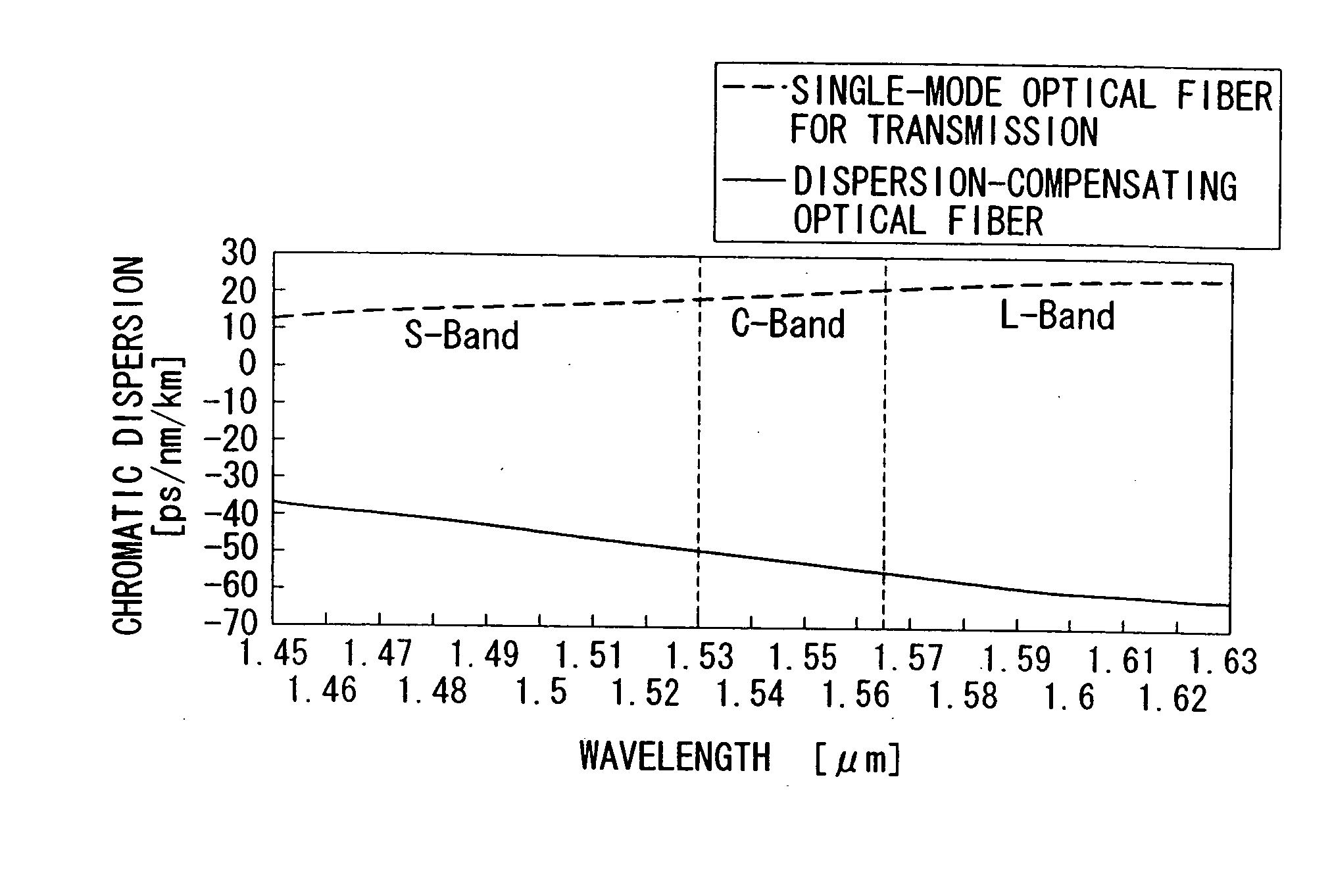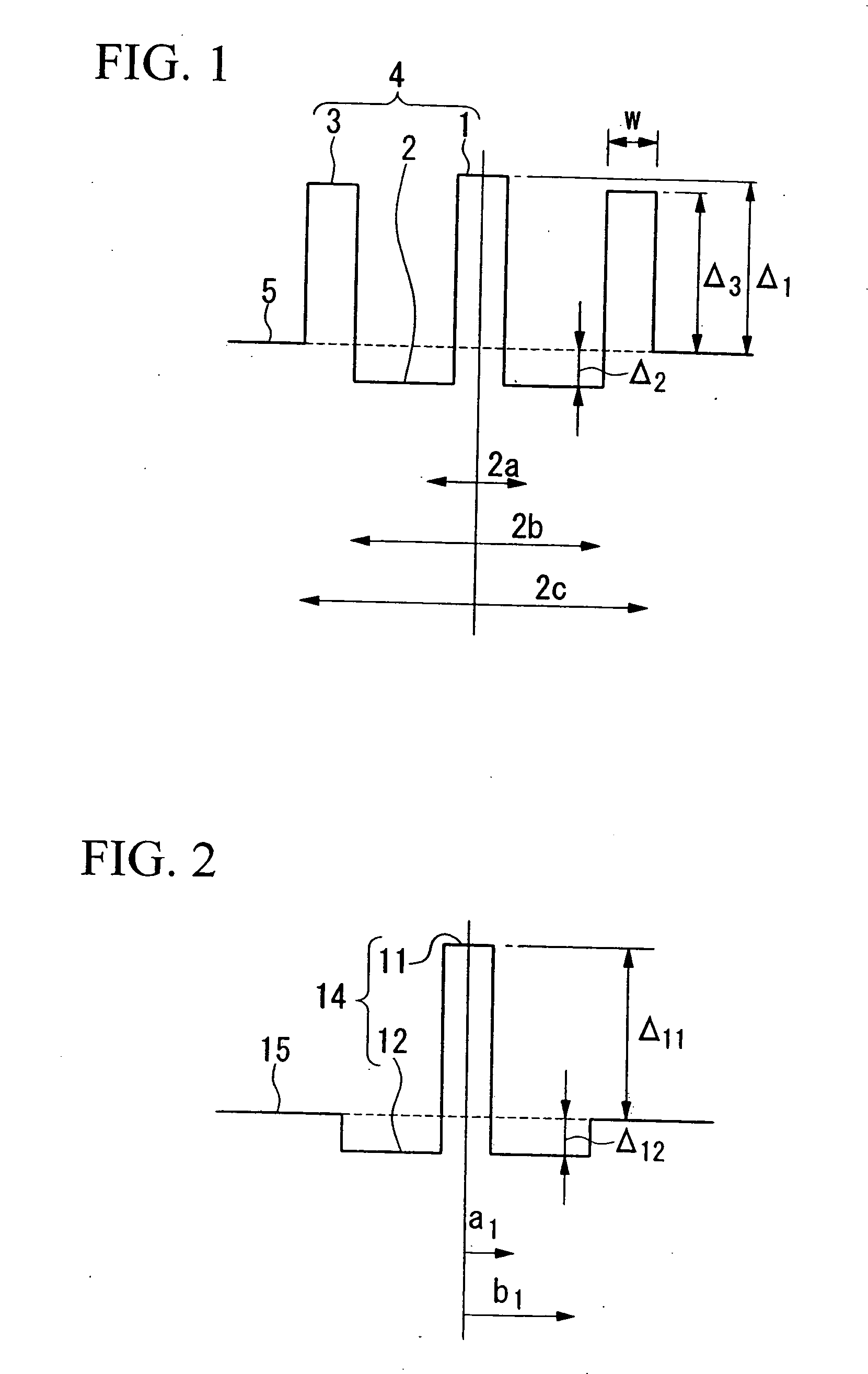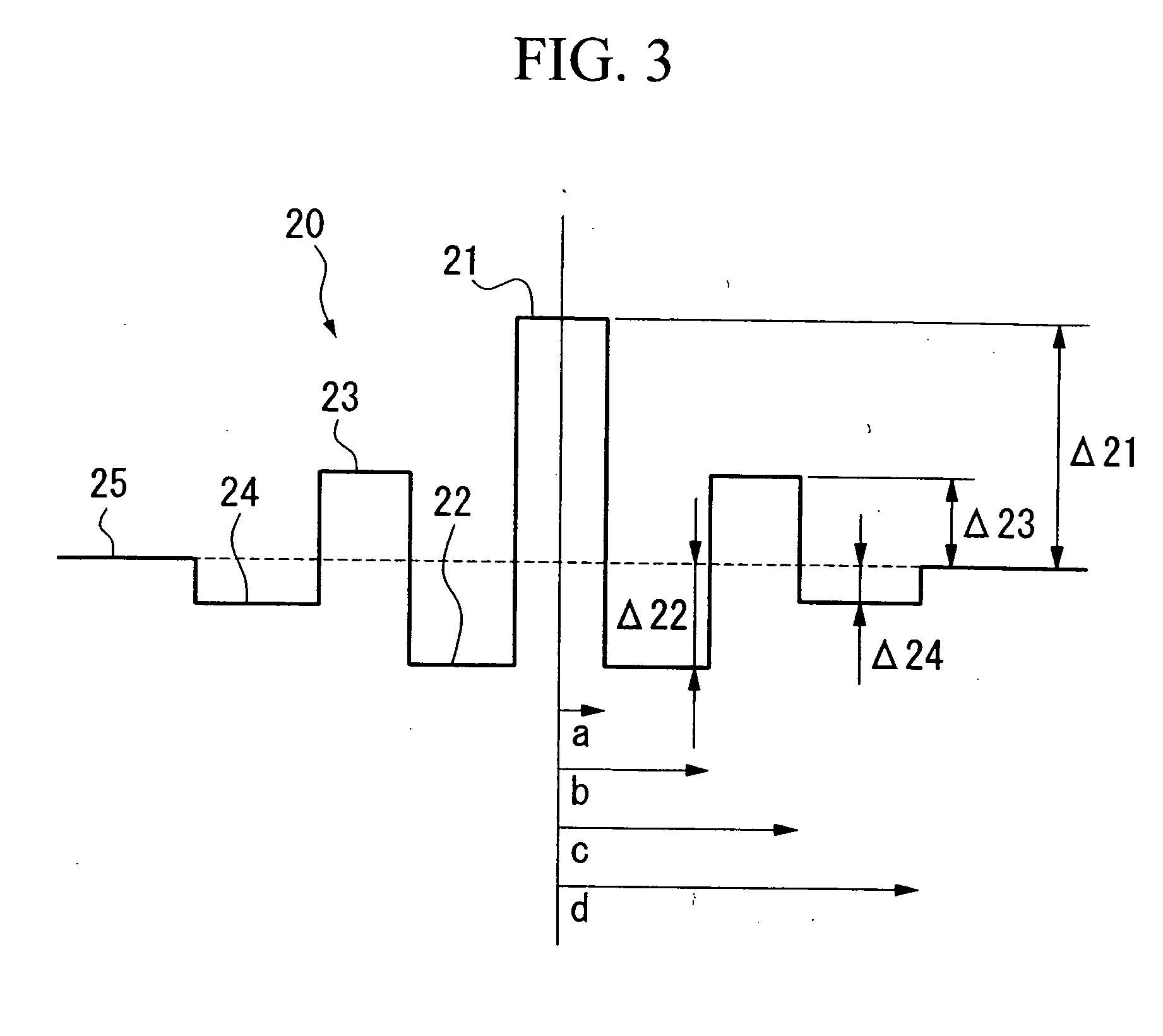Dispersion-compensating optical fiber and hybrid transmission line
a hybrid transmission line and optical fiber technology, applied in the direction of optical fiber with multi-layer core/cladding, optical waveguide light guide, instruments, etc., can solve the problems of non-linear effects, non-linear effects, and easy non-linear effects
- Summary
- Abstract
- Description
- Claims
- Application Information
AI Technical Summary
Benefits of technology
Problems solved by technology
Method used
Image
Examples
second embodiment
[0290] The following provides an explanation of embodiments as claimed in the present invention.
[0291] (Embodiments as Claimed in a Second Embodiment)
[0292]
[0293] A cylindrical porous body provided with a first layer comprised of GeO.sub.2-doped quartz glass and a second layer comprised of SiO.sub.2 provided around an outer periphery of said first layer was fabricated by a known method such as VAD or MCVD. Furthermore, the ratio of the diameter of the second layer to the diameter of the first layer was 4.0.
[0294] This porous body was subjected to dehydration treatment with He and chlorine gas in an atmosphere of about 1000.degree. C. followed by simultaneously doping with fluorine and transparent vitrification in an atmosphere of He at 5 l / min and SiF.sub.4 at 1 l / min to fabricate a rod.
[0295] This rod was then drawn to form a core base material, and a porous body composed of SiO.sub.2 for cladding was attached around it followed by dehydration treatment with He and chlorine gas in...
third embodiment
[0312] The following provides an explanation of embodiments as claimed in the present invention.
[0313] (Embodiments as Claimed in a Third Embodiment)
[0314]
[0315] A fiber base material was fabricated in accordance with known methods such as VAD, MCVD and PCVD after which it was drawn to produce five types of dispersion-compensating optical fibers (A through E: Embodiments, F: Comparative Example).
[0316] These dispersion-compensating optical fibers were provided with the refractive index distribution pattern shown in FIG. 1, and the values for .DELTA..sub.1, .DELTA..sub.2, .DELTA..sub.3, b / a and c / a were set to the values shown in Table 3-1 for each of the dispersion-compensating optical fibers.
[0317] In addition, the central core portion 1 and the ring core portion 3 were formed from germanium-doped quartz glass, the intermediate core portion 2 was formed from fluorine-doped quartz glass, and the cladding 5 was formed from fluorine-doped quartz glass. The fluorine concentration of t...
fourth embodiment
[0334] The following provides an explanation of embodiments as claimed in the present invention.
[0335] (Embodiments as Claimed in a Fourth Embodiment)
[0336]
[0337] Dispersion-compensating optical fibers provided with the refractive index distribution pattern shown in FIG. 3 were produced.
[0338] To begin with, a cylindrical porous body was fabricated by VAD having a structure consisting of a GeO.sub.2-doped core and SiO.sub.2 cladding (cladding diameter / core diameter=2.0-2.2). However, the core and cladding referred to here do not correspond to the core and cladding in an actual dispersion-compensating optical fiber, but rather are names used for the sake of convenience to indicate each layer of a two-layer structure. In other words, the central portion is referred to as the core (portion serving as the central core portion 21), and the portion surrounding it is referred to as the cladding (portion serving as the intermediate core portion 2 2).
[0339] After subjecting this porous body...
PUM
 Login to View More
Login to View More Abstract
Description
Claims
Application Information
 Login to View More
Login to View More - R&D
- Intellectual Property
- Life Sciences
- Materials
- Tech Scout
- Unparalleled Data Quality
- Higher Quality Content
- 60% Fewer Hallucinations
Browse by: Latest US Patents, China's latest patents, Technical Efficacy Thesaurus, Application Domain, Technology Topic, Popular Technical Reports.
© 2025 PatSnap. All rights reserved.Legal|Privacy policy|Modern Slavery Act Transparency Statement|Sitemap|About US| Contact US: help@patsnap.com



